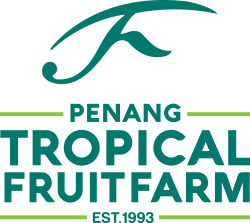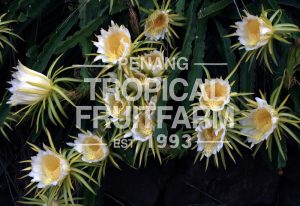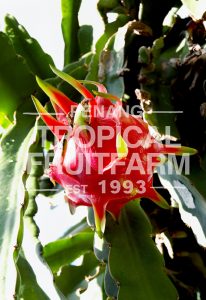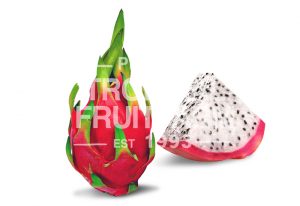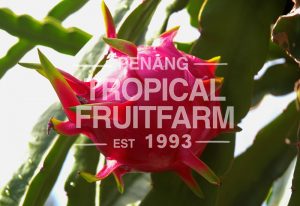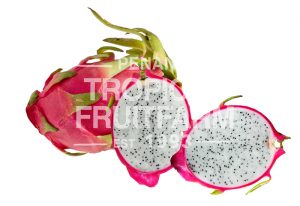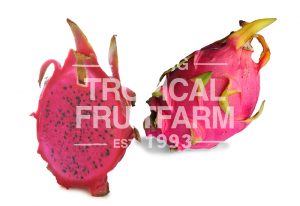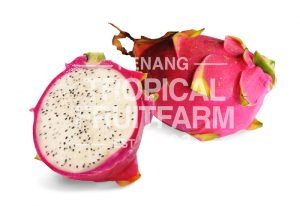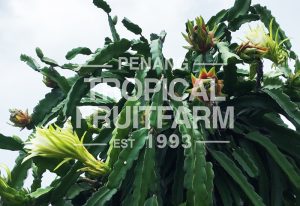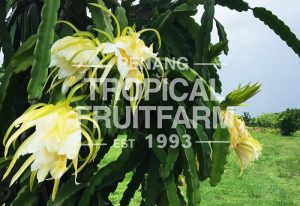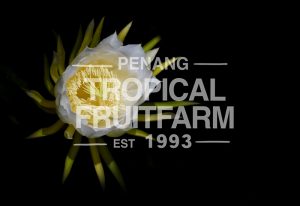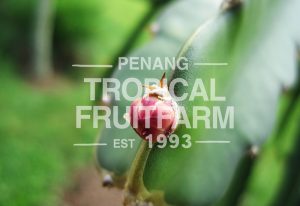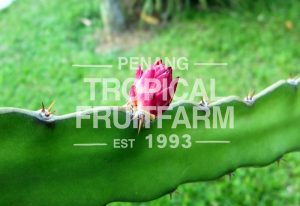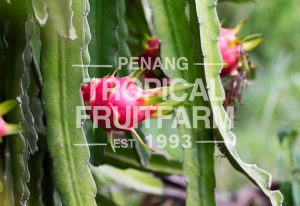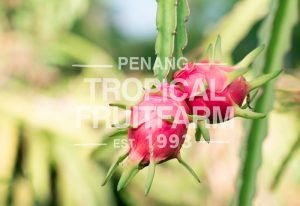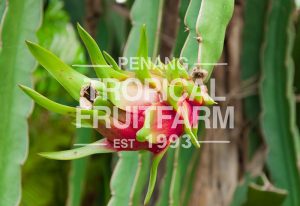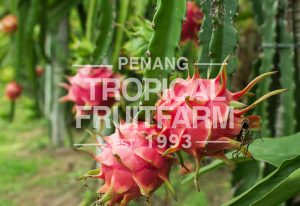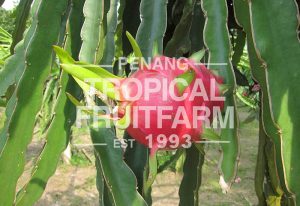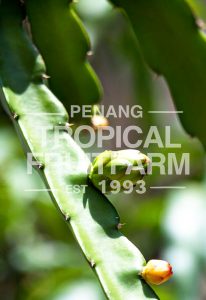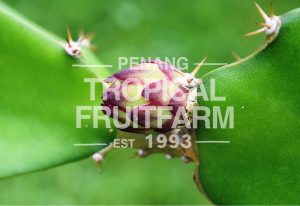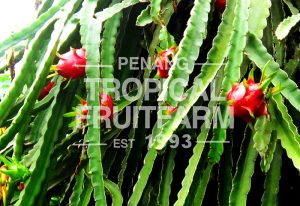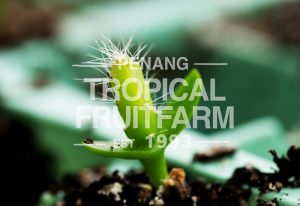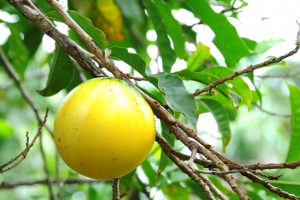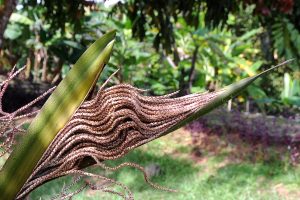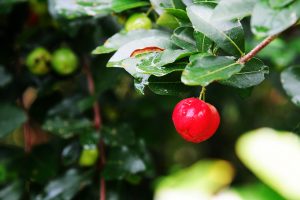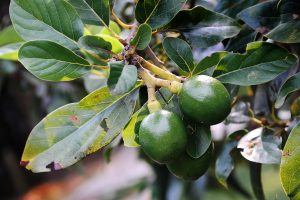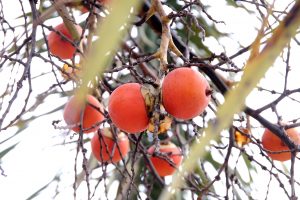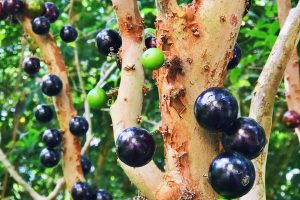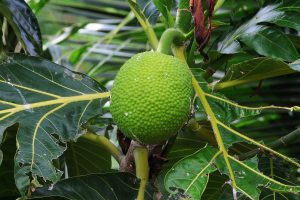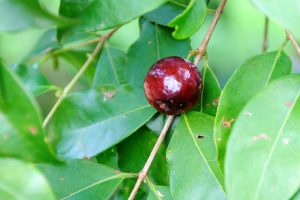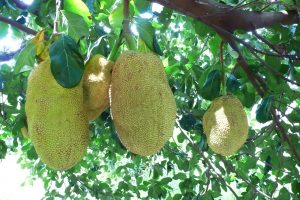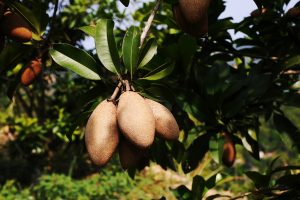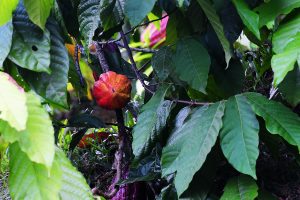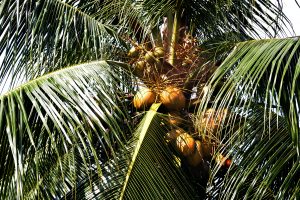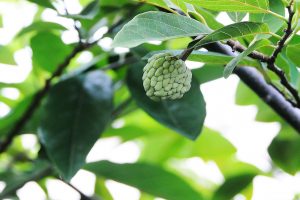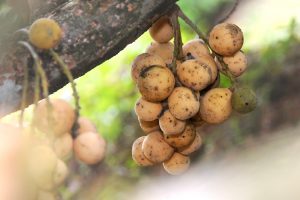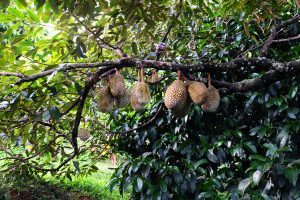| Origin | Native to Mexico, Central America and South America. It is likely from Southern Mexico through Belize, Guatemala, El Salvador and Costa Rica. |
| Description | The biggest in all edible cacti fruits. Two varieties have magenta-pink skins with polka-dotted white or magenta flesh and another with yellow skin and white flesh with tiny black seeds. |
| Growth Habitat | They grow well in tropical and subtropical parts of the world. Some shade may be needed especially when the plant is young. |
| Foliage | As a climbing cactus, long, three-corner, green stems with aerial roots can be trained to grow up from the ground onto 1.5m wooden supports and then branch out, downwards. Stems can grow to 10m in length. |
| Flowers | Flowers appear from these swellings and are large, perfumed, ivory white with yellow centers containing a large number of stamens. The flowers open in the evening and are finished in the early morning, lasting only one night. They are very spectacular and have earned the name moonflower or Queen of the night. |
| Fruits | Fruits mature 30-50 days after flowering. Fruit are large, between 150-1.2kg and brightly coloured pink, crimson, yellow or red with fleshy green scales. The flesh is white or red or magenta with many tiny black seeds. |
| Harvest | Dragon fruit are generally harvested close to full ripe stage because they do not continue ripening after harvest. As the fruit matures and ripens, skin color changes to red or yellow and flesh firmness starts decreasing. |
| Soil | Prefers free draining soil with sandy to clay loam types 5.3 to 6.7pH and high organic matter. Shallow rooted with most roots concentrated on top of 15 – 30cm soil depth. Cannot tolerate water logging of soil. |
| Pruning | Prune to obtain on open, manageable and productive umbrella shaped canopy. |
| Fertilization | Apply a handful of complete fertilizer N-P-K 14-14-14 3 months after planting and continue fertilizer applications every 3 months thereafter. It also requires organic matter. |
| Propagation | Dragon-fruit plant can be propagated by seed but the most practical method is by stem cutting. A 20cm stem to be used for propagation should be more than one-year old. The cutting develops roots easily in about 30 to 45 days and is ready for transplanting. |
| Nutritional Properties | Dragon fruit is low in calories and offers numerous nutrients, including Vitamin C, phosphorus, calcium, plus fiber and antioxidants. The fruit and seeds contain an antioxidant called phytoalbumin, which is a cancer-causing-free-radical destroyer. |
| Health Benefits | Eating the fruit can lower blood sugar levels, promotes smooth skin and it can inhibit growth of tumor cells. Good fiber content for those suffering from constipation. Dragon fruit which contain adequate protein can increase metabolism and maintain cardiovascular health, preventing colon cancer, diabetes, also good for eye health, improves brain function, the immune system and strengthens bones. Good for liver, digestive and endocrine problems. |
| Commercial Uses | The fruit is popularly eaten raw and tastes better chilled. It is also served as a juice or in a fruit cocktail. It is sometimes used in cooking. Unopened flower buds and peeled stems can be cooked like vegetables. Other uses can be to make an enzyme drink, red wine, fiber in powder form, cosmetic, personal care, jam, ice-cream and tea. |
| Food Suggestion | Dragon fruit boats - 200gms chicken meat – cut into pieces - 200gms prawn meat – cut into pieces - 2 dragon fruits - 1 kiwi fruit – skinned and cut into pieces - 2 strawberries – cut into pieces Sauce Mixture : - 1 ½ tbsp Premium Oyster Flavored Sauce - 1 ½ tbsp Sugar - 1 tsp Chopped Mint (optional) - 75ml water - 2 tsp lime juice - 2 tsp corn starch Method: Cut dragon fruits into halves lengthwise. Scoop the flesh out to make balls of about 200g. Remove any remaining flesh and keep the skin of the dragon fruits. Stir-fry chicken and prawn meat in 2 tbsp oil until done. Add sauce mix and cook until sauce thickens. Stir in all fruits. Serve hot in the skin of the dragon fruits. |
